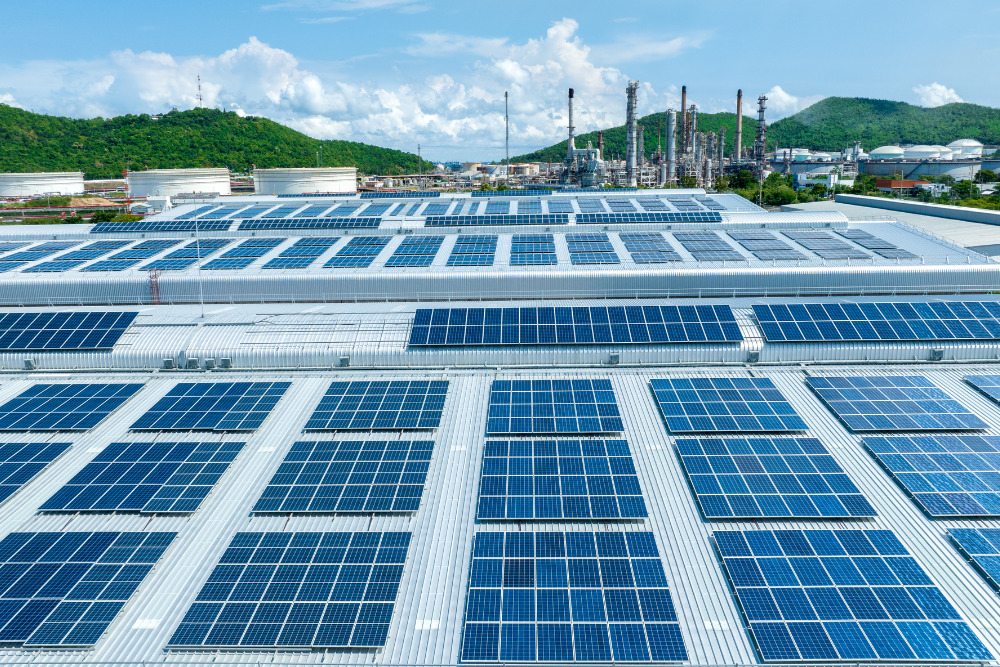
Warehouse roofs are excellent spaces for solar installations since they’re flat, have large surface areas, and are exposed to direct sunlight. But, can you power a factory with solar alone, and how much does it cost?
Large commercial facilities can’t ignore fossil fuels’ contribution to climate change, so shifting to sustainable energy is the way to go. One of the most viable ways of generating clean energy is by installing rooftop solar in warehouses or distribution centers.
Can You Run A Warehouse On Solar Power?
Yes. Regardless of size or industry, you can run a warehouse entirely on solar power.
Warehouses can be power-hungry structures, especially if their operations include cold storage or food preservation. Their large roof spaces absorb lots of heat from the sun, increasing the interior temperature, so these buildings require a lot of energy to power HVAC equipment.
Running warehouse operations comes with hefty energy costs since diesel and electricity prices fluctuate. And that’s where solar systems come in. Solar energy is sustainable, reliable, and convenient, making it an ideal energy source for commercial buildings like warehouses.
This renewable energy is sufficient to meet the warehouses’ energy requirements and power different operations, such as:
- Lighting
- Air conditioning
- Cooling and heating
- Refrigeration
- Machinery
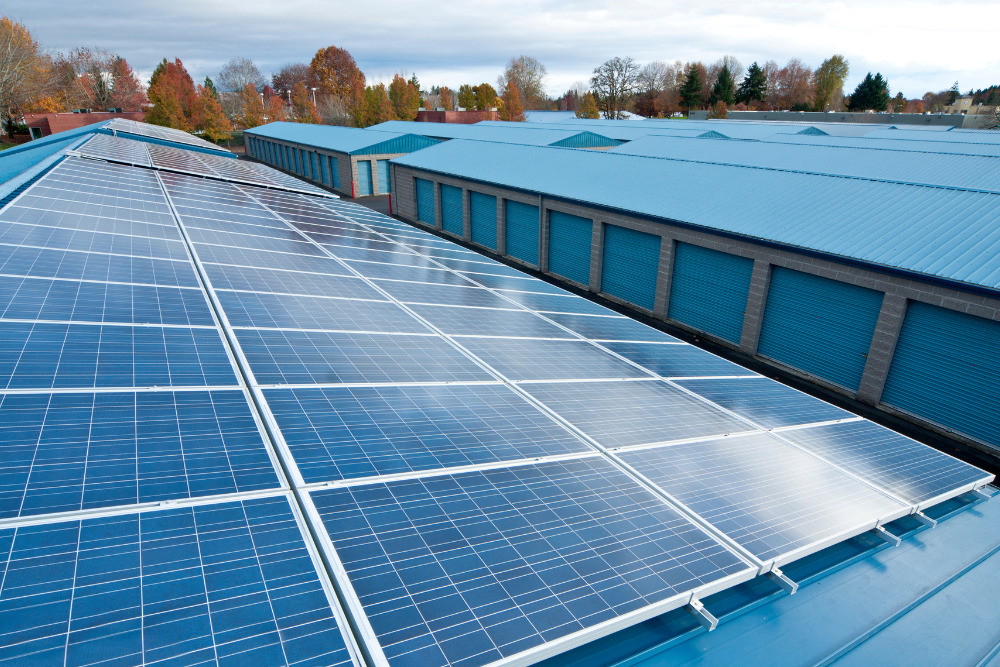
How Many Solar Panels Are Needed To Run A Warehouse?
The number of solar panels required to meet a warehouse’s energy demands is highly dependent on several factors, such as:
- Size of the warehouse
- Type of operations in the warehouse
- Energy usage
- Type of solar panel - size, quality, and energy efficiency
- The solar panels’ degradation rates
For a general idea, around 3,000 solar panels are needed to generate 1 megawatt of electricity. To put that in perspective, Apple Park, Apple’s new headquarters in Cupertino, has a 17 megawatt rooftop solar installation, and Amazon’s largest fulfillment center in Europe powered by solar boasts more than 11,000 panels.
How Much Energy Do Commercial Solar Panels Generate?
Commercial solar panels generate 1.125 kWh to 1.8 kWh of daily solar energy.
1.125 and 1.8 kWh represent the total power output that solar panels can generate when exposed to 4.5 hours of sunlight. Typical commercial solar panels have power output ratings ranging from 250 watts to 400 watts. This wattage shows their capacity to generate solar energy per hour under normal conditions.
The amount generated by commercial solar panels can fluctuate depending on other factors like:
- Solar panel design or model - panel size, number of solar cells, material, and manufacturing process all affect efficiency
- Solar panel’s energy efficiency - what percentage of sunlight the solar panel converts to usable energy
- The environment - solar panels in desert climates can generate more solar energy
- Orientation - solar panels on south-facing unobstructed roofs are well-positioned to meet their energy production capacity
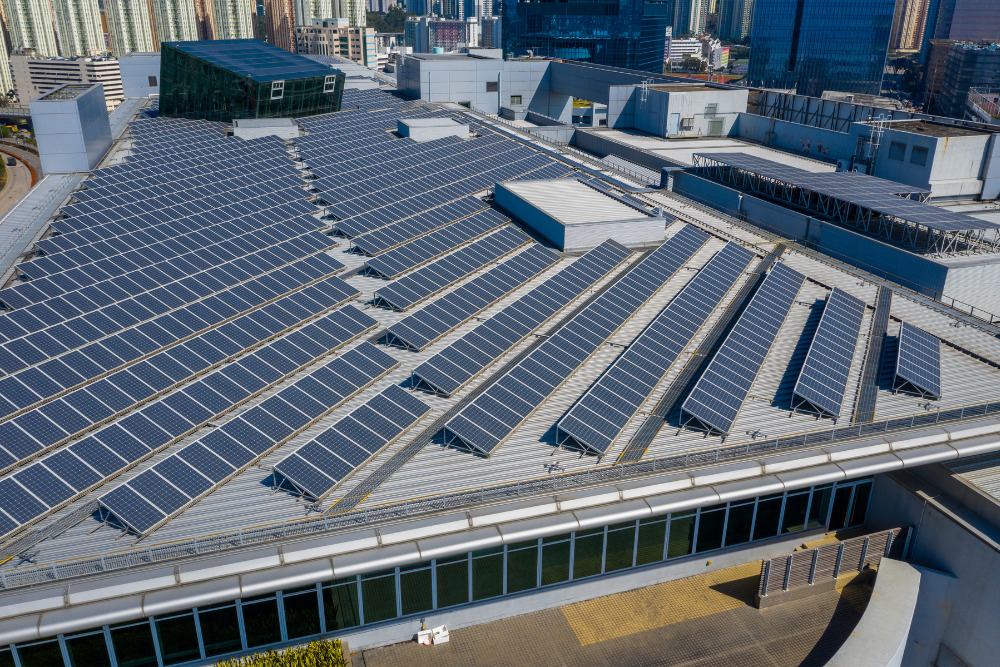
What Warehouses Use Solar Energy?
Mega-retailers and iconic brands like Walmart and Amazon use solar energy in their warehouses and distribution centers.
Companies globally have realized the potential of harnessing solar energy. Some have invested heavily in solar projects to generate clean energy in-house. But others have taken a different path, purchasing gigawatts of renewable energy.
Here are American brands whose warehouses and distribution centers use solar energy:
- Walmart is the third-largest corporate solar user in the U.S. This giant retailer upped its solar use by 35% in 2019 and developed over 550 solar projects in 8 countries in 2020.
- Amazon leads the pack in brands that purchase renewable energy. The mega-retailer has invested in 237 solar projects and seeks to produce 56,881 gigawatt-hours (GWh) of clean energy annually from its solar and wind farms.
- Target Corp is another renowned retailer using solar power and sustainable operations to lower greenhouse gas emissions. The company uses solar energy in its facilities and now has a net zero store in California.
- Home Depot has been using solar energy in its stores since 2017. The giant retailer has attained a 2,732.8 GWh solar potential per year, according to Electrek.
- Costco Wholesale Corp. has installed 62 solar systems in five U.S. states. These include rooftop solar in its warehouse in California.
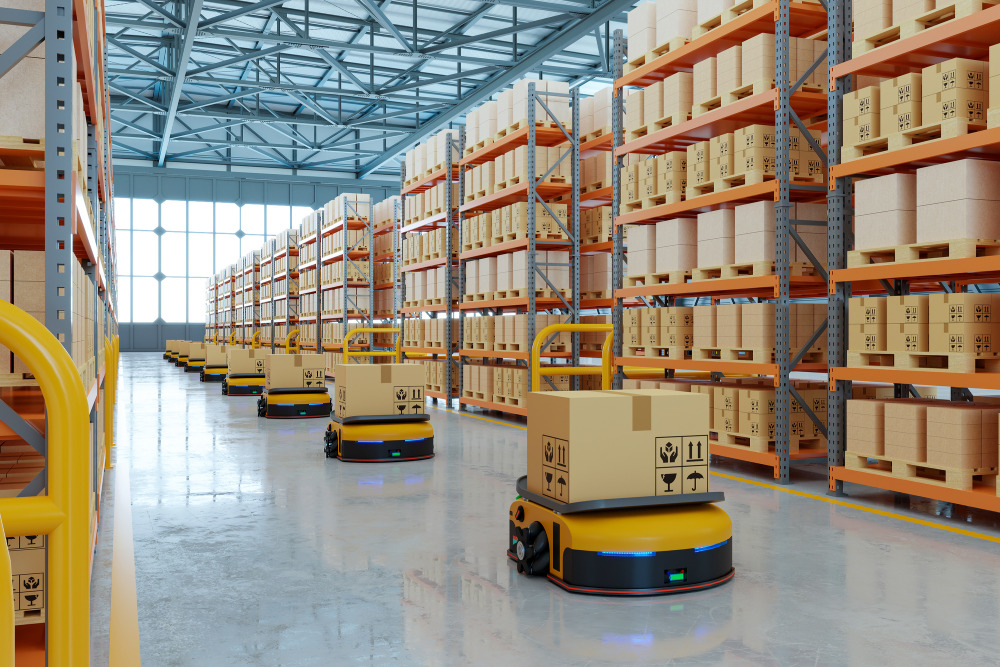
How Much Money Can A Warehouse Save Using Solar?
On average, energy bills for warehouses account for about 15% of their total operating costs.
However, the exact amount of money warehouse saves from solar panel installation varies by hundreds or thousands of dollars depending on:
- The current cost of electricity
- A warehouse’s energy usage
- The size of the warehouse rooftop
- Cost of solar installations
- Available incentives for solar system installation
- The efficiency and durability of solar panels
What If A Warehouse Doesn’t Have Enough Roof Space For Solar?
A warehouse can install solar panels in other areas if its roof space is limited.
A warehouse roof facing south is the best place for solar installation, but some factories need more roof space to generate the required amount of electricity.
With such limitations, warehouse owners can be creative and find other areas to install their solar arrays. For instance, solar farms on underutilized open grounds feature panels mounted on racks a few feet above the ground.
Carports and parking lots are also ideal areas for solar installation. The solar panels generate solar electricity while providing shade for employee and customer cars.
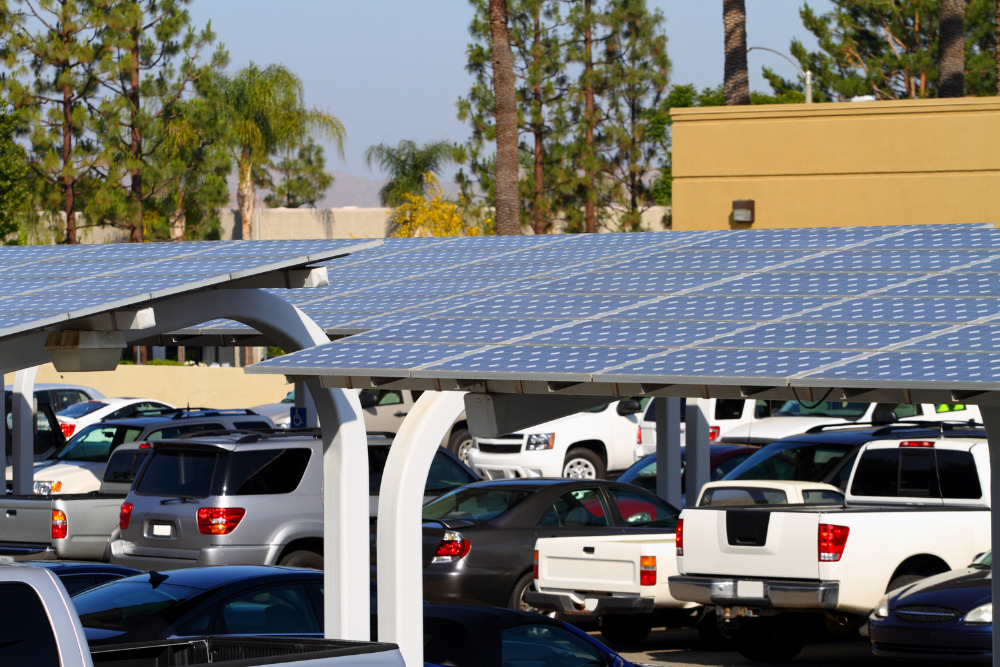
How Much Do Solar Panels For A Distribution Center Cost?
On average, commercial solar panels cost between $2.00-$4.00 per watt before deducting tax credits, incentives, and rebates.
Solar panel prices are calculated per watt according to the panel’s power capacity. But solar installation includes other expenses, such as design, labor, permit, and interconnection application costs.
The cost of installing solar panels in a distribution center is subject to factors such as:
- System size
- Cost of each solar panel
- Available roof (or installation) space
- Amount of solar energy needed
- Solar company’s installation fees (labor costs vary drastically by location)
- Type of equipment used in the installation
- Any necessary structure modifications or permits
Beyond Reducing Operating Costs, What Are The Benefits Of Going Solar For Warehouses?
Switching to solar energy presents many benefits for warehouses apart from reduced operating costs.
Going Solar is Good for the Environment
Warehouses support their commitment to sustainability and reduce their carbon footprint by going solar. Solar energy minimizes carbon dioxide emissions and reverses the harsh effects of climate change on the environment.
Solar power is also replenished naturally, so it doesn’t overburden the environment. Hence, warehouses don’t have to rely on finite energy sources like fossil fuels that degrade the environment.
An Opportunity to Give Back to Society
Warehouses can generate massive amounts of solar energy that surpasses their usage.
According to a new report by Environment America Research & Policy Center’s, Johanna Neumann, and Frontier Group’s Bryn Huxley-Reicher, the 450,000 warehouses and distribution centers in the U.S. have over 16.4 billion square feet of rooftop space. By installing solar on warehouses across the United States, they could generate 185.6 terawatt-hours of community solar yearly, enough to power 19.4 American homes.
The report found that warehouses could produce 176% of their annual electricity use in solar—far more than they need—which would allow them to use net metering to return the extra energy to the power grid to power low-income homes.
Solar Panels Protect Warehouse Roofs
Rooftops fitted with solar panels are shielded from the harsh rays of direct sunlight, so they’re protected from degradation and last longer. In addition, the solar panel shade prevents warehouse rooftops from absorbing direct sunlight into the building’s interior, which could help regulate HVAC usage.
Solar-powered Warehouses have a Better Brand Image
Using green energy is an excellent way for companies to promote their reputation. It shows their concern for the environment and efforts to protect the planet. With an improved brand image, corporations attract new like-minded customers and employees.
Solar-powered warehouses are also excellent marketing surfaces, especially for those in flight paths or surrounded by taller buildings. With SolarSkin custom-printed overlays, warehouses can turn their sea of rooftop solar panels into a beautiful branding opportunity.


